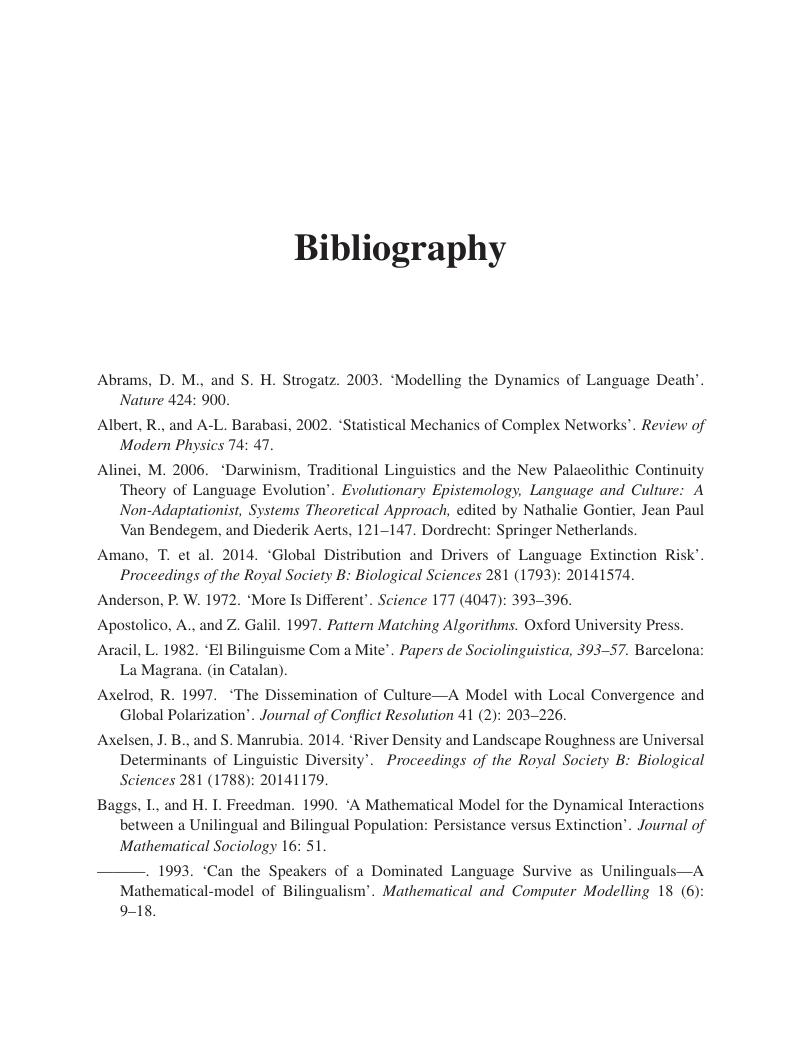Bibliography
Published online by Cambridge University Press: 04 June 2020
Summary

Information
- Type
- Chapter
- Information
- Languages in Space and TimeModels and Methods from Complex Systems Theory, pp. 179 - 196Publisher: Cambridge University PressPrint publication year: 2020
